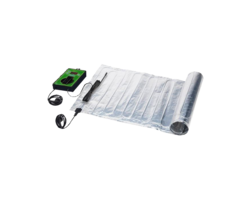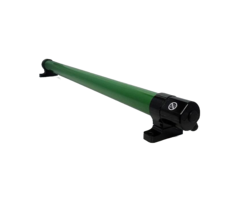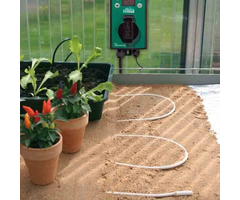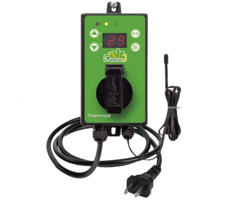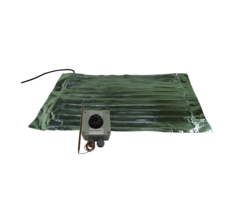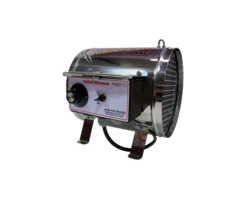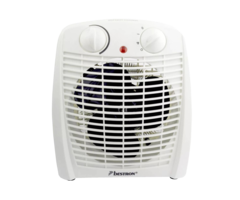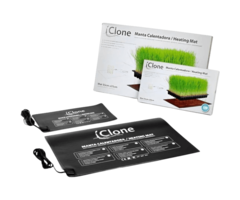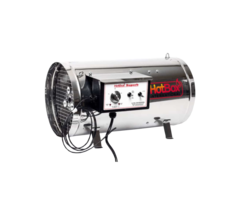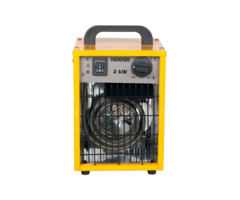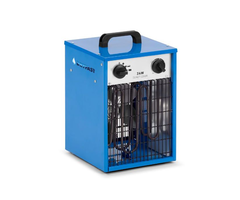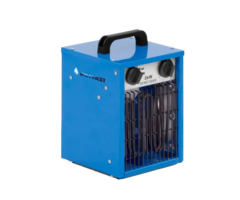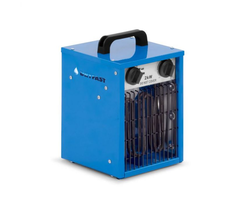Electric Heater ~ Get through the cold winter
Save on your gas bill with an electric heater
Want to buy an electric heater? Save on your gas bill with an electric stove. Especially in today's time where fossil fuels are becoming scarce and increasingly expensive, an electric heater is becoming increasingly attractive.

Why choose an electric heater?
- You can place the electric heater wherever you want, all you need is an outlet or extension cord, there is no flue. When the cold winter is over, you can easily store the stove.
- An electric heater is cheaper to buy than a pellet or wood stove.
- There is no flame involved, which makes heating your space very safe.
- You consume no fossil fuels with an electric heater.
- Wide choice, so there is an electric heater for everyone's needs.
- You can choose between an electric heater with radiant heat or convection heating.
Radiant or convection heating?
An electric heater can be divided into two types, radiant heating or convection heating. In this you can only choose what you want, this depends entirely on your situation in which you want to use the electric heater. But what is radiant heat and what is convection heating? Below we explain this for you.
Radiant heat
An electric heater that uses radiant heat to heat the room sends heat directly to the cold objects in your room. With radiant heat, the heater itself gets hot and transfers heat to the surrounding cold objects by radiation. An advantage of radiant heat over convection heating is that there is no air circulation. Because there is no air circulation, you prevent house dust or other types of particulate matter from being blown throughout the room or house.
Convection heating
An electric heater that heats by convection is a heater that heats the air and blows it through your space. So a convection heater can also be called a fan heater. As the air continues to circulate, the heat generated will quickly rise to the top and will gradually drop to the bottom, creating a sort of "heat layer. By the time that air has descended, it has also cooled down, this causes it to be sucked back up by the electric heater and blown out again warm.
Save on your gas bill with an electric heater
Want to buy an electric heater? Save on your gas bill with an electric stove. Especially in today's time where fossil fuels are becoming scarce and increasingly expensive, an electric heater is becoming increasingly attractive.

Why choose an electric heater?
- You can place the electric heater wherever you want, all you need is an outlet or extension cord, there is no flue. When the cold winter is over, you can easily store the stove.
- An electric heater is cheaper to buy than a pellet or wood stove.
- There is no flame involved, which makes heating your space very safe.
- You consume no fossil fuels with an electric heater.
- Wide choice, so there is an electric heater for everyone's needs.
- You can choose between an electric heater with radiant heat or convection heating.
Radiant or convection heating?
An electric heater can be divided into two types, radiant heating or convection heating. In this you can only choose what you want, this depends entirely on your situation in which you want to use the electric heater. But what is radiant heat and what is convection heating? Below we explain this for you.
Radiant heat
An electric heater that uses radiant heat to heat the room sends heat directly to the cold objects in your room. With radiant heat, the heater itself gets hot and transfers heat to the surrounding cold objects by radiation. An advantage of radiant heat over convection heating is that there is no air circulation. Because there is no air circulation, you prevent house dust or other types of particulate matter from being blown throughout the room or house.
Convection heating
An electric heater that heats by convection is a heater that heats the air and blows it through your space. So a convection heater can also be called a fan heater. As the air continues to circulate, the heat generated will quickly rise to the top and will gradually drop to the bottom, creating a sort of "heat layer. By the time that air has descended, it has also cooled down, this causes it to be sucked back up by the electric heater and blown out again warm.
Availab...
Available in: NK10...
Available in: 25 x 35 cm | 30 x 60 cm | 40 x 65 cm....
Available in: 4.3 meters | 6 meters | 10 meters | 25 meters....
...
A...
Available in: 2kW...
Available in: DEH2 (2Kw) & DEH3 (3Kw)....
Save on your gas bill with an electric heater
Want to buy an electric heater? Save on your gas bill with an electric stove. Especially in today's time where fossil fuels are becoming scarce and increasingly expensive, an electric heater is becoming increasingly attractive.

Why choose an electric heater?
- You can place the electric heater wherever you want, all you need is an outlet or extension cord, there is no flue. When the cold winter is over, you can easily store the stove.
- An electric heater is cheaper to buy than a pellet or wood stove.
- There is no flame involved, which makes heating your space very safe.
- You consume no fossil fuels with an electric heater.
- Wide choice, so there is an electric heater for everyone's needs.
- You can choose between an electric heater with radiant heat or convection heating.
Radiant or convection heating?
An electric heater can be divided into two types, radiant heating or convection heating. In this you can only choose what you want, this depends entirely on your situation in which you want to use the electric heater. But what is radiant heat and what is convection heating? Below we explain this for you.
Radiant heat
An electric heater that uses radiant heat to heat the room sends heat directly to the cold objects in your room. With radiant heat, the heater itself gets hot and transfers heat to the surrounding cold objects by radiation. An advantage of radiant heat over convection heating is that there is no air circulation. Because there is no air circulation, you prevent house dust or other types of particulate matter from being blown throughout the room or house.
Convection heating
An electric heater that heats by convection is a heater that heats the air and blows it through your space. So a convection heater can also be called a fan heater. As the air continues to circulate, the heat generated will quickly rise to the top and will gradually drop to the bottom, creating a sort of "heat layer. By the time that air has descended, it has also cooled down, this causes it to be sucked back up by the electric heater and blown out again warm.

